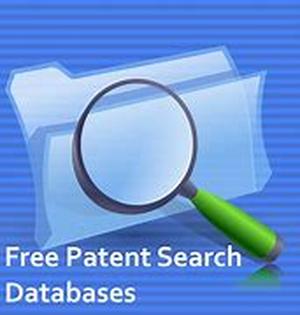
KWD: 14488 2.86Free Patent SearchAn Inventor Can Conduct A Free Patent Search In Order To Determine If His Or Her Invention Is Patentable. The Free Patent Search Has Traditionally Been Limited To The Free Patent Search Office Database Records Of Prior Patents And Publications. But With The Aid Of The Internet And The Recognition Of Business Method Patents, Free Patent Search Is Evolving And Becoming Easier To Do. But Still, Free Patent Search Begins In The Electronic Databases Of The Various Patent Offices Worldwide. Inventor Need Not Solicit The Help Of A Patent Counsel To Conduct A Free Patent Search. They Can Do The Work Themselves And Search For Free Patent Search Sites. For An Inventor To Be Able To Start His Or Her Own Free Patent Search, He Or She Needs To Access The U.S. Patent Office Database At Http:www.uspto.govpatftindex.html. A Patent And Trademark Depository Library (PTDL) Is A Library Which Is Designated By The US Patent And Trademark Office (PTO) To Receive And House Copies Of US Patents And Patent And Trademark Materials, To Make Them Available To The Public, And To Disseminate Both Patent And Trademark Information. To Be Designated, A Library Must Meet Specific Requirements And Promise To Fulfill Certain Obligations. Patents And Trademarks (word Marks Only) May Be Searched At The PTDLs. Patent And Trademark Depository Librarians Cannot Give Any Legal Advice Nor Can They Perform The Free Patent Search For You Free Patent Search Is Important To Prevent Shelling Out Thousands Of Dollars In A Patent Application. In Some Instances, Certain Elements Of The Proposed Invention (embodiments), But Not All, Will Be Patentable. A Prior Free Patent Search And Opinion Allows The Inventor To Identify The Patentable Elements And File A Patent Application Which Avoids The Prior Art. 7 Steps To Conducting A Free Patent Search At Patent And Trademark Depository Library (PTDL):1. Index To The US Patent Classification. Begin The Free Patent Search With This Alphabetical Subject Index To The Manual Of Classification. 2. Manual Classification. Locate Class And Subclass Numbers In The Manual. Note Where The Terms Fall Within The US Patent Classification System. 3. Classification Definitions. Read The Definitions To Establish The Scope Of Class And Subclass Relevant To The Search. 4. Browse Patent Titles And Abstract. Browse Through Titles Of Patents And Published Applications In The Given Class And Subclass. Step 2. Remember That Patents BIB Includes Bibliographic Information For Patents From 1969 To Present And Published Patent Applications From 2001 To The Present. 5. Retrieve Subclass Listing. Once You Have Identified The Relevant Classes And Subclasses, Obtain A List Of All Patent Numbers.6. Official Gazette- Patent Section. Go To The Gazette And Look For Exemplary Claim And A Representative Drawing For All Patents On The List To Eliminate Patents Unrelated To The Invention. 7. Complete Patent Document. Search The Complete Text And Drawing Of Closely Related Patents To Determine How Different They Are From The Invention.





